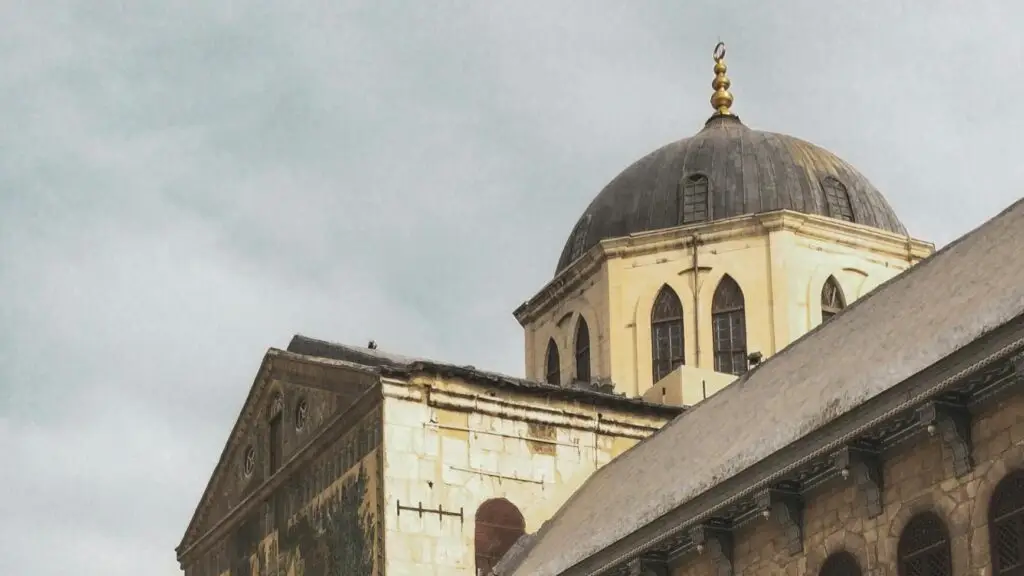The recent fall of the Assad regime, and the subsequent capture of Damascus by the islamist ‘Tahrir al-Sham’ opposition group has attracted global attention, especially after the emir of the group, al-Julani, participated at a Congregational prayer at the Umayyad Mosque. Due to the mosques importance as being a centre of Sunni learning, the first Friday prayer at the mosque had been seen as a celebration of liberation by Syria’s Sunni Muslims, from the now-toppled Shia regime of Bashar al-Assad. However, the history of the mosque goes further than being a Sunni monument, and even than the Umayyad dynasty itself, contrary to what its name may suggest.
An Aramean temple dedicated to the god of rain, Hadad-Ramman, had been erected during the Iron Age at the site of the modern-day mosque. Usually dated to the rule of King Hazael, mentioned in the Bible, the temple served as the central hub for the city of Damascus. Only a single stone dated back to this time period survives, and is on display at Syria’s national Museum. After the conquest of Damascus by the Roman Empire in 64 BC, the Romans associated the native god Hadad-Ramman with their own rain god, Jupiter. Thus, the temple was converted into a Roman one under the reign of emperor Augustus, and under the supervision of the architect Apollodorus. The renewed temple soon became the largest temple in Roman Syria, and was continuously contributed to by the Roman authorities and by rich citizens of Damascus. The courtyard was expanded during the reign of Emperor Septimius Severus. After the Empire’s conversion to Christianity, the temple was converted into a cathedral by Emperor Theodosius the Great, and served as the second most important bishopric in Syria, only after the Patriarchate in Antioch.
In 634, the city of Damascus was captured by the Arab military commander Khalid ibn al-Walid and therefore came under the authority of the Umayyad Dynasty. It was chosen to be the new capital of the Caliphate. As the cities population continued to be majority Christian, the new authorities did not interfere with the Cathedral. However, as the Muslim population of the city grew, new measures were taken to accommodate both religions. At first this was in the form ofa small prayer room for Muslims, attached to the side of the cathedral. Nonetheless, the Muslim population kept growing and eventually outranked the Christian one, leading to the seizure of theCathedral by the Caliph al-Walid, in intention to turn it into a Friday mosque. The Christians of the city were compensated with the return of previously confiscated churches back to them. The construction of the new mosque took around 9 years, and it was completed shortly after the death of al-Walid.
The architecture of the mosque was highly innovative for the time, and influenced many other mosques around the Islamic World. When it was first constructed, the Mosque had a lack of minarets, old Roman towers were used by the muezzin to make his voice herd during the call to prayer. During the Abbasid, Fatimid and Mamluk eras, three different minarets were added to the mosque. In the following centuries, the mosques importance did not get diminished, even being attended to by Selim I, the Ottoman Sultan who conquered the city from the Mamluks, during the first Friday prayer after his conquest.

